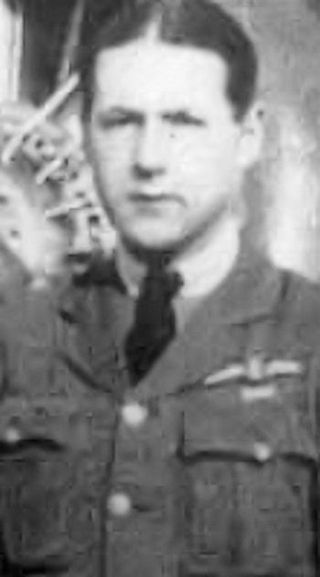Thomas Falcon Hazell & Bar was a fighter pilot with the Royal Flying Corps, and later, the Royal Air Force during the First World War. Hazell scored 43 victories in 1917–18 making him the fifth most successful British "flying ace" of the war, and the third most successful Irish-born pilot, behind Edward Mannock and George McElroy, as well the only pilot to survive the war from both groups.
Lieutenant Harold Byrn Hudson MC was a Canadian First World War flying ace, officially credited with 13 victories. As wingman to William George Barker, he scored a record five victories over observation balloons in a single day.
Lieutenant Harry Neville Compton was a World War I flying ace credited with five aerial victories.
Lieutenant Harold Arthur Sydney Molyneux was a World War I flying ace credited with five aerial victories. During World War II, he returned to service in the Royal Canadian Air Force.

Lieutenant Hilbert Leigh Bair began his service career as a World War I flying ace credited with six aerial victories.
Captain Henry Gordon Clappison was a World War I flying ace credited with six aerial victories.

Howard Clayton Knotts was a prominent American aviation lawyer who served in World War I as a flying ace credited with six aerial victories.
Lieutenant George Edgar Bruce Lawson was a South African World War I flying ace credited with six aerial victories.
Captain Ronald Sykes (1899-1977) was a World War I flying ace credited with six aerial victories.
Lieutenant Philip Murray Tudhope was a World War I flying ace credited with six aerial victories.
Captain Guy Wilbraham Wareing was a British World War I flying ace credited with nine aerial victories.
Major Edgar Oxenham Amm was a South African flying ace during World War I, credited with ten aerial victories. He returned to service during World War II. Between the wars, and after World War II, he was a farmer and businessman.

Lieutenant Kenneth Russell Unger was an American World War I flying ace credited with fourteen aerial victories. His candidacy rejected by his own nation, Unger applied to the British Royal Flying Corps for military pilot training in June 1917. Once trained, he was assigned to the Royal Naval Air Service (RNAS). As the RNAS was merged into the Royal Air Force, Unger scored his aerial victories between 26 June and 1 November 1918. In later life, Unger remained involved in aviation and served again during World War II. He also joined the U.S. Navy Reserves, rising to the rank of rear admiral.

Lieutenant Chester Ellis Wright was an American World War I flying ace credited with nine confirmed aerial victories. He was the top scoring ace for his squadron.
Captain William Stanley Jenkins was a Canadian flying ace during World War I. He was officially credited with 12 aerial victories, having scored his first two while still on sick leave.
Captain Roy Manzer, was a Canadian World War I flying ace credited with 12 official aerial victories. After his aerial military service, he returned to Canada and a long and distinguished legal and civic career.
Group Captain Norman William Reginald Mawle was a British World War I flying ace. He was credited with 12 official aerial victories during the First World War. During World War II, he returned to his country's service, not retiring until 1954.
Captain John Steel Ralston was a Scottish World War I war hero and flying ace. After winning a Military Cross in 1916 for lifesaving gallantry while serving in the infantry, he was credited with 12 official aerial victories as a fighter pilot before he was killed in action.
Lieutenant Malcolm Plaw MacLeod (1897-1960) was a Canadian flying ace. He was credited with seven aerial victories scored during the closing days of World War I. He then returned to Canada to complete his education and work as a stockbroker until World War II, when he served in the Royal Canadian Air Force for the war's duration.

Lieutenant Frederick Ernest Luff was an American flying ace during World War I. He was credited with five aerial victories, and awarded the British Distinguished Flying Cross.




